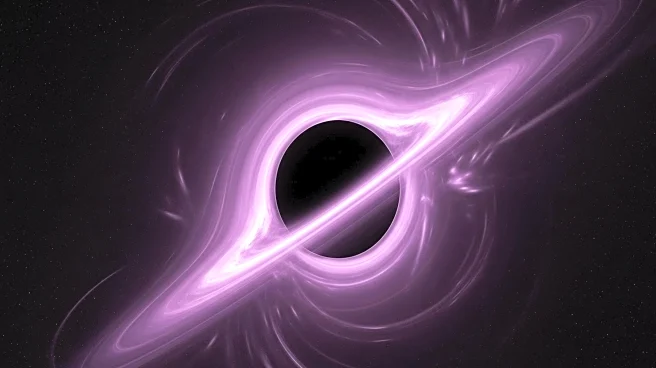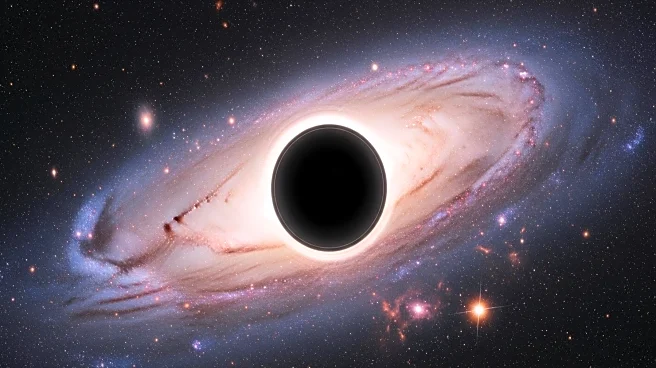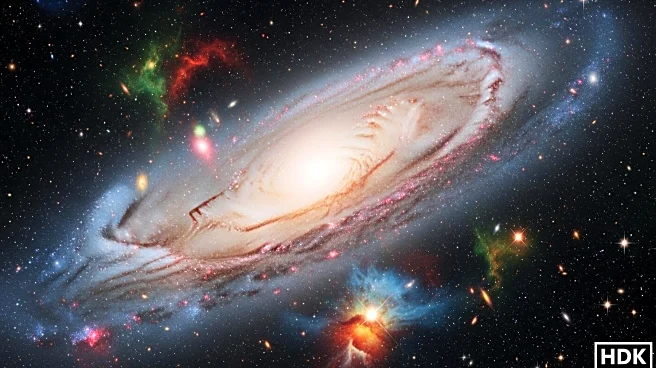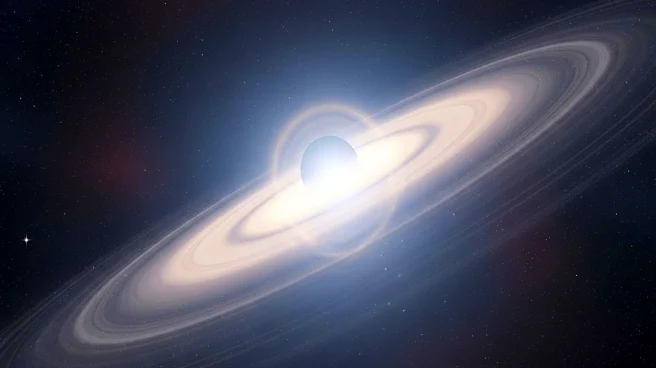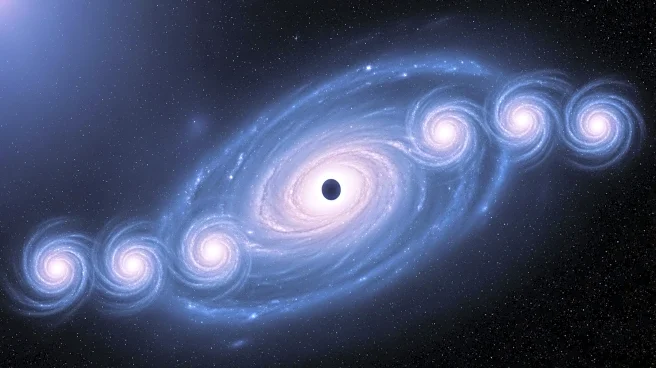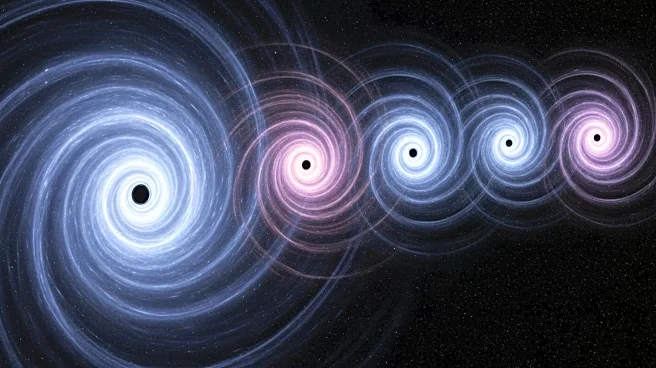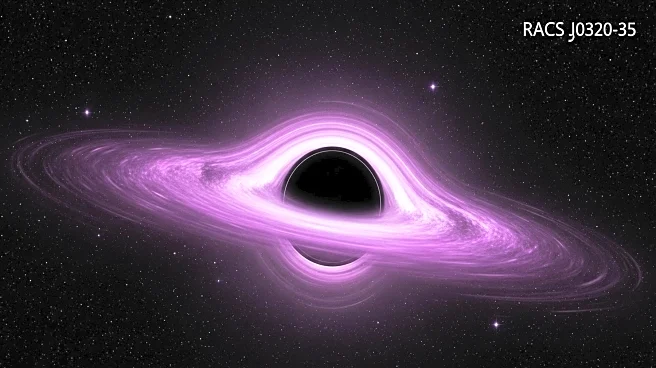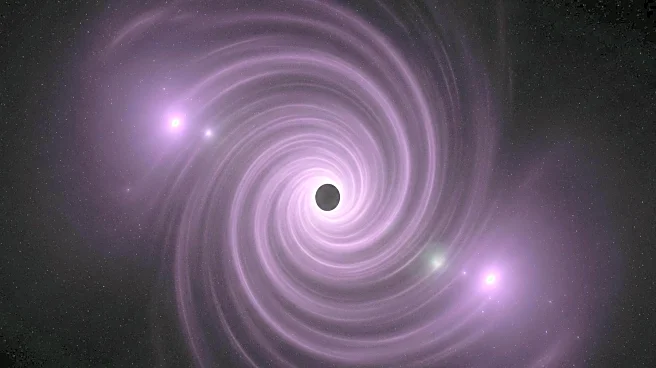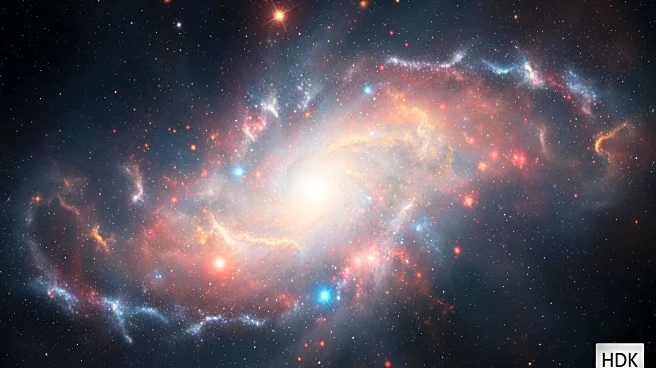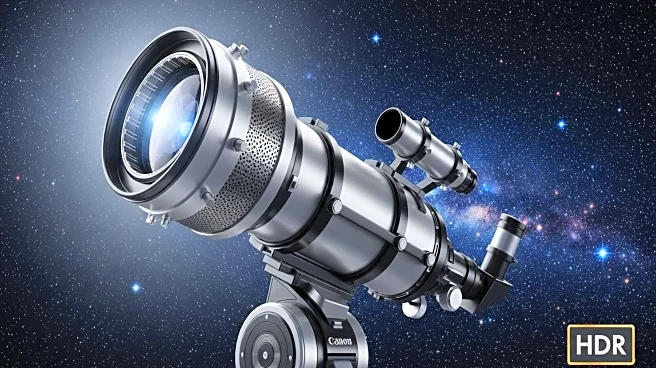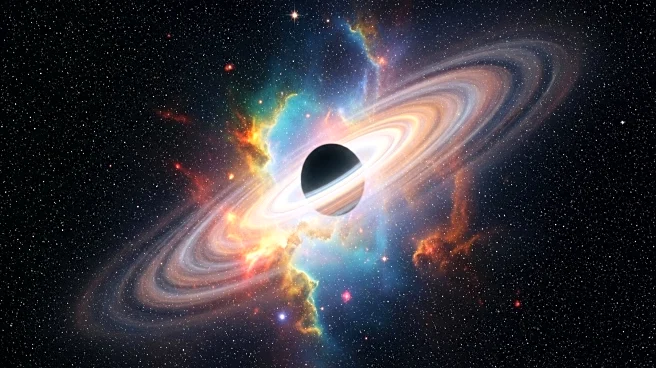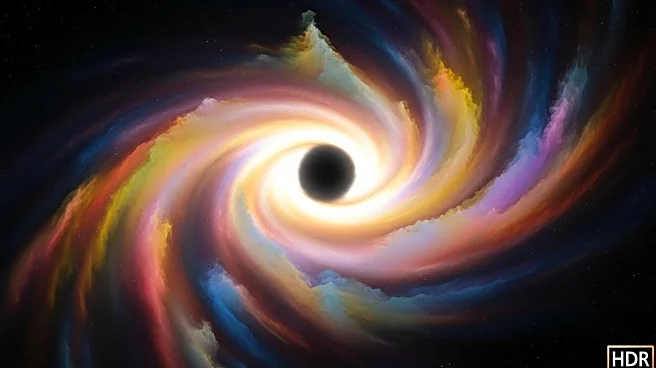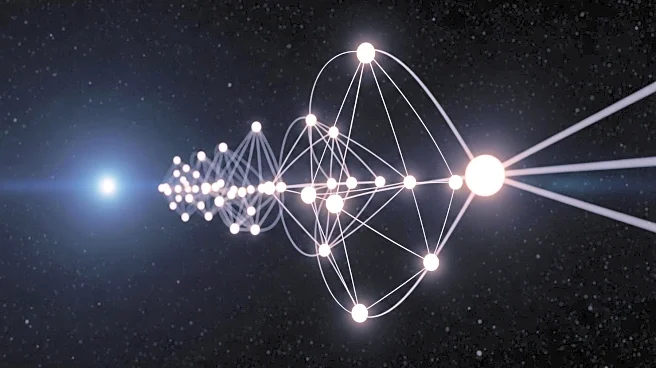What is the story about?
What's Happening?
Astrophysicists using the Very Large Telescope in Chile have discovered that the black hole of an infant galaxy is ten times smaller than theoretical models predicted. This finding suggests that previous methods for estimating black hole masses in the early universe may be unreliable. The study, available as a preprint, indicates that the presence of thick, dusty gas around the black hole can make it appear larger than it is. This revelation could lead to a reevaluation of cosmic evolution models and our understanding of the early universe.
Why It's Important?
The discovery challenges existing theories about the formation and growth of supermassive black holes, which are central to galaxy development. If black hole masses have been systematically overestimated, it could alter our understanding of cosmic evolution and the dynamics of the early universe. This research highlights the need for improved observational techniques and models to accurately assess black hole characteristics, potentially impacting future studies in astrophysics.
Beyond the Headlines
The study underscores the complexity of the early universe and the limitations of current models in explaining its dynamics. It invites further investigation into the factors influencing black hole growth and the role of cosmic phenomena in shaping galaxy formation, potentially leading to new insights into the universe's history.
AI Generated Content
Do you find this article useful?
